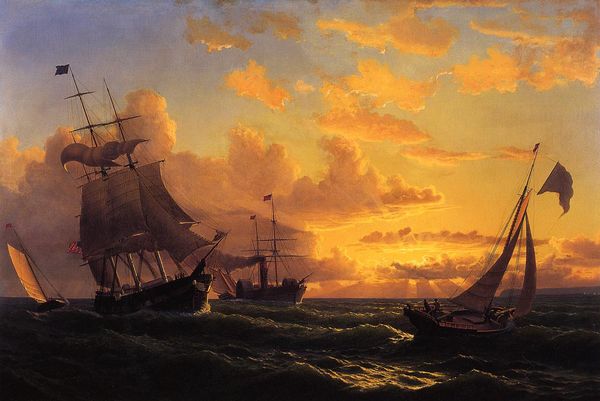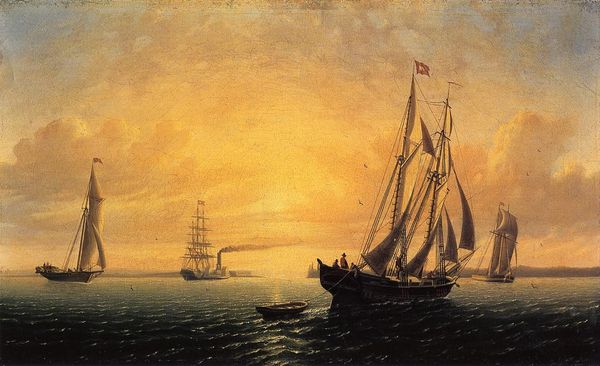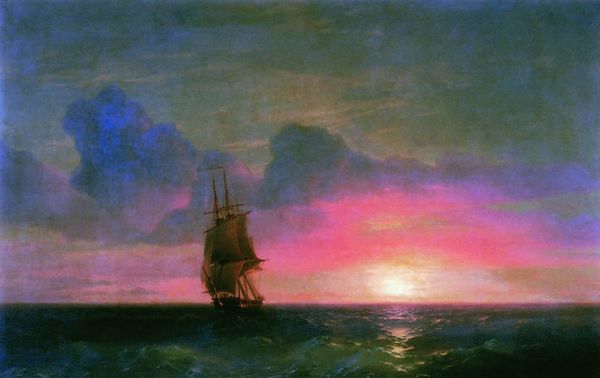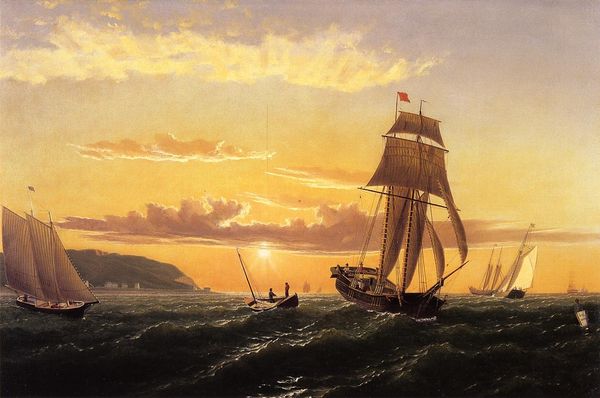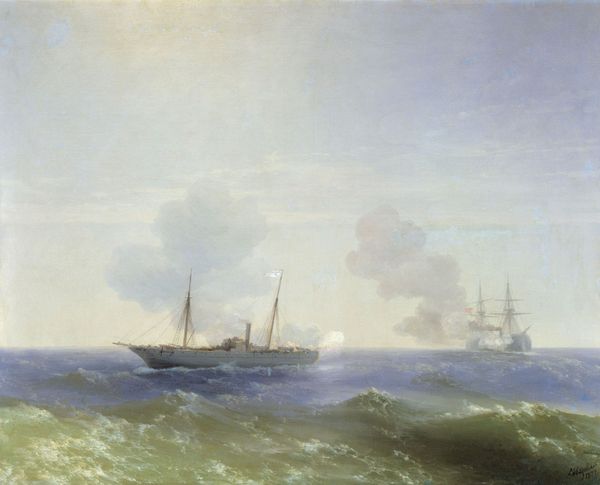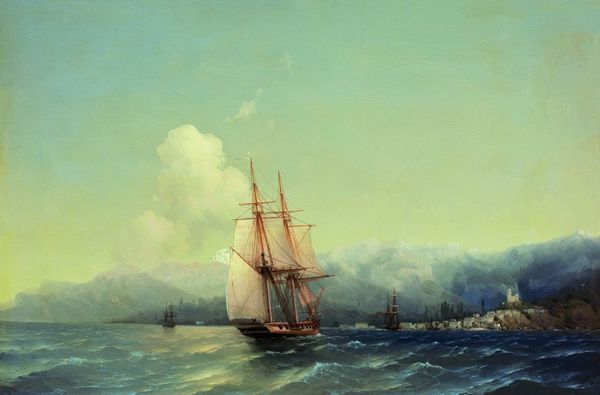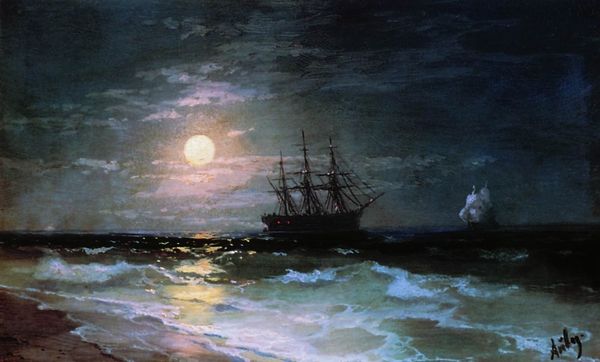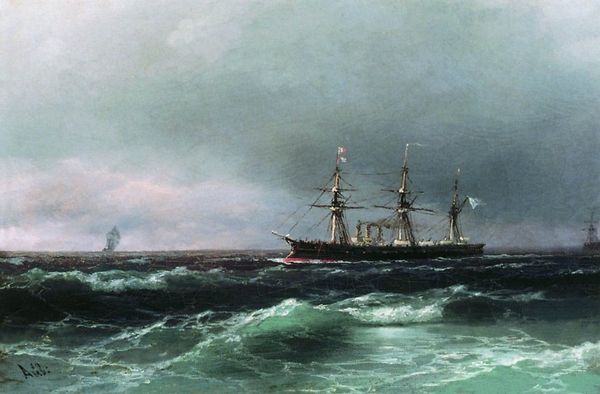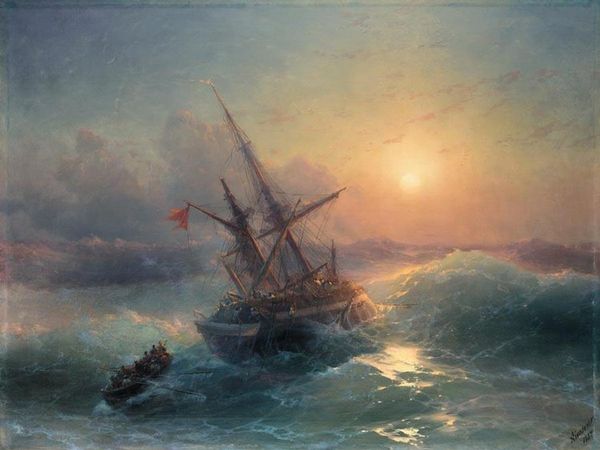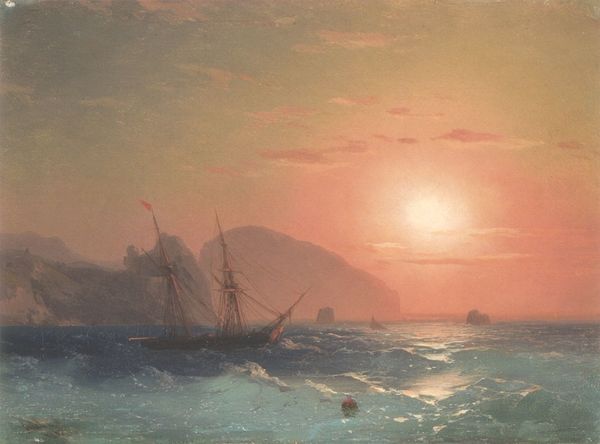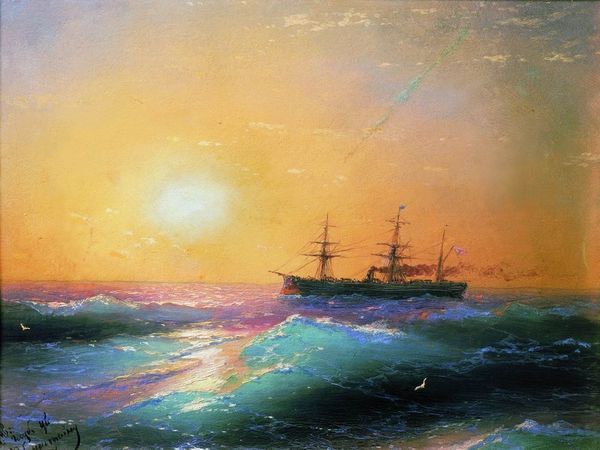
Copyright: Public domain
Editor: This is "Sunset on a Rough Sea" by James Hamilton, painted in 1873 using oil paint. It definitely conveys a sense of dramatic, almost overwhelming power of nature. What can you tell me about it? Curator: It’s fascinating to consider this work through a postcolonial lens. Maritime paintings often celebrated exploration and trade, yet romanticized the inherent dangers. Who exactly was on that ship? Were they willingly sailing or forced into labor? Think of the complex power dynamics at play on these vessels. What did "exploration" truly mean for indigenous populations? Editor: That's an angle I hadn't considered. So, you're saying we should be critical of the romantic portrayal of the sea and ships during this period? Curator: Precisely. This image might seem like a straightforward landscape, but it's deeply intertwined with global power structures and human exploitation. What stories aren't being told in this seemingly beautiful scene? How does this portrayal align with the era's expansionist agendas? Editor: So, by focusing on what's absent or implied, we can unpack some uncomfortable truths about that time? Curator: Exactly. We need to consider how images like this helped construct narratives about progress and domination, often masking violence and oppression. Whose perspective are we seeing? Whose stories are erased? Editor: This has given me so much to consider beyond just the visual aspects of the painting. I'm glad to think more critically about historical context now. Curator: I'm glad! Looking beneath the surface is key. It’s by questioning these representations that we can create a more complete, and truthful, historical narrative.
Comments
No comments
Be the first to comment and join the conversation on the ultimate creative platform.
